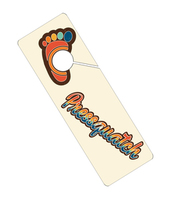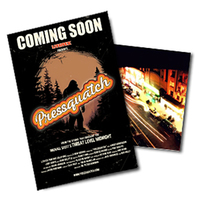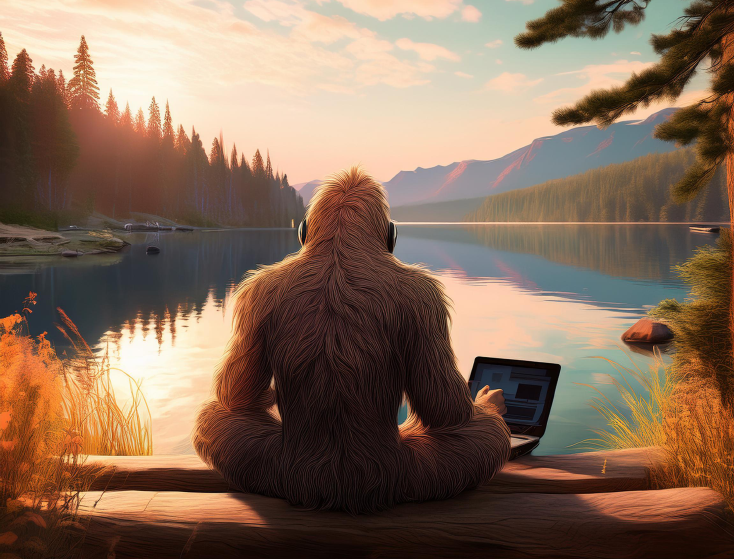For centuries, the hunt for Sasquatch has captivated adventurers, scientists, and believers alike. From blurry photos to mysterious footprints, the legendary creature has left just enough clues to keep the search alive—but never quite enough to solve the mystery.
So, how do Sasquatch investigators go about their work? What techniques and tools do they use to track the elusive beast? And more importantly, could you do it too?
Let’s dive into the science, lore, and latest technology behind Sasquatch tracking.
1. Footprints: The Most Famous Evidence
If there’s one thing Sasquatch is known for, it’s his massive feet. Some of the most compelling evidence for Bigfoot’s existence comes in the form of oversized, deep-set footprints found in remote locations.
How Investigators Analyze Footprints:
- Depth and Pressure Analysis – Determines weight, movement, and whether the print is real or fabricated.
- Stride Measurements – Sasquatch is said to have a much longer stride than humans, often four to six feet between steps.
- Dermal Ridge Examination – Some footprint casts have fingerprint-like patterns in the sole, suggesting biological origins rather than fakes.
Tools Used:
- Plaster Casting Kits – To create molds of prints for further study.
- 3D Scanners – Digitally capture prints for forensic comparison.
- Trail Cameras – To monitor areas where footprints are frequently found.
2. Audio Recordings: The Sounds of Sasquatch
Many trackers believe Sasquatch is more often heard than seen. Strange howls, wood knocks, and eerie vocalizations have been reported across North America.
Common Sasquatch Sounds and What They Mean:
- Howls and Screams – Some researchers compare these to primate calls or deep wolf-like howls.
- Wood Knocking – A possible communication method, where Sasquatch bangs tree trunks with sticks.
- Samurai Chatter – A bizarre, fast-paced, almost language-like sound recorded by Bigfoot hunters in the 1970s.
Tools Used:
- Parabolic Microphones – To capture distant, low-frequency sounds.
- Digital Audio Recorders – Placed in remote locations to detect possible vocalizations.
- Sound Spectrum Analysis Software – To compare unknown sounds with known animal calls.
3. Thermal and Night Vision Technology
Since most sightings happen at dusk or night, thermal imaging and night vision are essential tools for Bigfoot hunters.
How It Works:
- Thermal cameras detect heat signatures in the dark, helping to spot a large, warm-blooded creature moving through the trees.
- Night vision amplifies low light, making it easier to see shadows or movement.
Tools Used:
- FLIR Thermal Cameras – Detects heat differences in the environment.
- Infrared Night Vision Scopes – Used to scan forests at night.
- Motion-Sensing Cameras – Triggers when movement is detected.
4. Drone and Satellite Surveillance
Modern Sasquatch investigators are turning to technology from above.
Drone Capabilities in Bigfoot Research:
- Thermal cameras detect heat signatures in dense forests.
- High-resolution zoom lenses capture distant figures.
- Motion tracking software scans movement patterns over time.
Satellite Surveillance:
- Researchers are using satellite imagery to search for unusual trails, possible shelters, or patterns of movement in remote areas.
5. DNA and Hair Analysis
The ultimate goal of any investigation is hard biological evidence. Over the years, many “Sasquatch hairs” have been analyzed, but most results come back as known animals like bears, elk, or even humans.
What Scientists Look For:
- Unknown DNA Markers – Unique genetic material that doesn’t match any known species.
- Mitochondrial vs. Nuclear DNA – Determines if an unknown sample is from a new primate species.
- Microscopic Hair Structure – Sasquatch hair is often described as coarse, hollow, and lacking a central medulla, different from human or bear hair.
6. The Best Tool of All: The Human Eye
Despite all the technology, the most compelling Sasquatch stories come from eyewitnesses.
How Sightings Are Verified:
- Consistency of Reports – Are similar descriptions appearing in the same area?
- Cross-Checking Tracks, Sounds, and Footage – Do footprints or sounds back up a sighting?
- Behavior Analysis – Does the sighting describe something biologically plausible?
The biggest challenge for researchers is that Bigfoot is described as a master of disappearing. Many reports say he blends into the environment almost too perfectly, raising speculation about natural camouflage—or something even stranger.
Can Bigfoot Be Found?
With the rise of AI-enhanced tracking, high-tech cameras, and biological testing, researchers may be closer than ever to finding real evidence of Sasquatch.
But one thing is certain: Whether you’re an experienced tracker or just a believer at heart, the hunt for Bigfoot isn’t just about proving he exists. It’s about exploring the unknown, chasing adventure, and keeping the legend alive.
What do you think?























